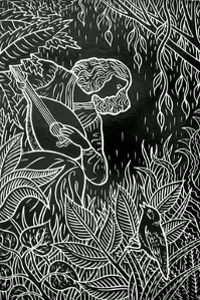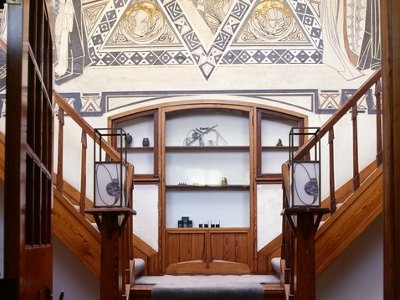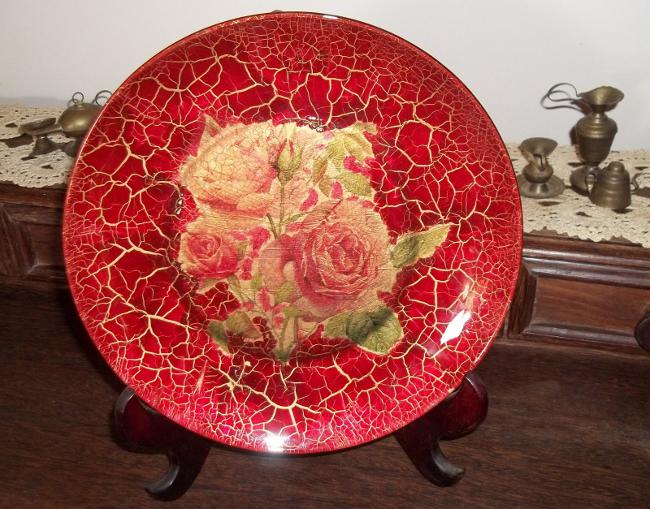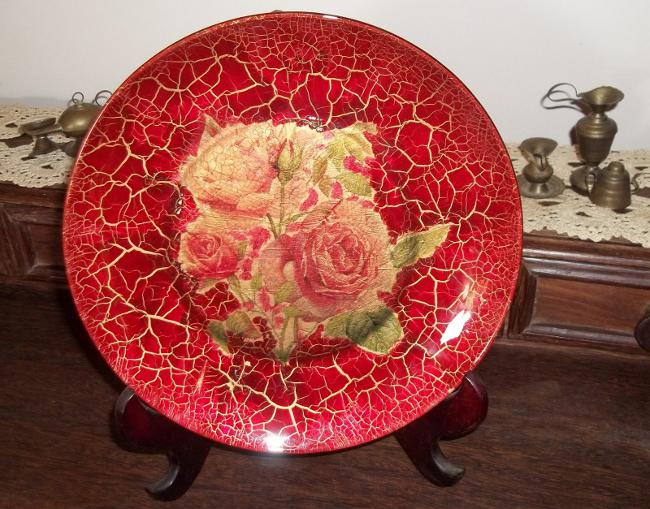Sgraffito - decorative carving on plaster
 Sgraffito Is the oldest art of drawing imageson various subjects. Even in Ancient Greece carvings on clay were decorated with ceramic products. Later, this technique spread to Italy, where it was used to decorate the walls. Modern technology sgraffito is often used for the original decoration of walls inside and outside the room.
Sgraffito Is the oldest art of drawing imageson various subjects. Even in Ancient Greece carvings on clay were decorated with ceramic products. Later, this technique spread to Italy, where it was used to decorate the walls. Modern technology sgraffito is often used for the original decoration of walls inside and outside the room. The technique of sgraffito is quite simple. The simplest option is to do this bicolour sgraffito. For this, a prepared and painted wallapply the first layer of plaster. Note that the colors of the plaster and the substrate must be different. Then in some places the plaster is scraped off, drawing a certain pattern. This results in a two-color drawing.
To obtain multicolor sgraffito, on the wall you have to apply several different in color layers of plaster. Then the applied plaster is scraped off to a certain depth to expose the desired layer.
Sgraffito: technique of execution
There are two ways of relief decoration of walls in the sgraffito technique. The first way is sample extraction. First, prepare the stencil. Transfer the selected pattern from the tracing paper to the cardboard. Use a thick sewing needle on the cardboard to make a series of holes that will repeat the contours of the pattern. You can transfer the picture using a conventional gauze pad filled with chalk or pigment. To make a gauze swab is very easy: take a square piece of gauze and fold it four times. In the middle, put the pigment and tightly tie the tampon.
Now you need to prepare the surface, which will be sgraffito. For this, a certain number of plaster layers are applied to the prepared wall basis. The most A strong sgraffito will be obtained from 5 different layers. At that the very first base layer will be the mostthick: 7-8 mm. The thickness of all subsequent layers will vary from 2 to 5 mm. When the plaster is applied to a prepared surface of 1 m², you can transfer a sgraffito pattern to it. To do this, apply a stencil and tap it with a gauze swab around the entire contour of the picture.


Sgraffito is performed by cutting out individual fragments. First cut out fragments of the lowest layer of plaster. Then cut out all the elements of the fourth layer, and so on.
The artistic painting of walls in sgraffito technique can also be performed with the help of pattern packing. But in this case it is necessary not to cutornament on plaster, and stuff it. To perform such printed sgraffito, stencils will again be required. Only this time for each color element of the picture you have to prepare a separate stencil. On the stencil, you need to completely cut out all the elements, leaving a few supporting jumpers in the figure.
When the stencil and the main wall are ready, you canstart to perform sgraffito. For this, the background layer of plaster is leveled and rubbed. When the layer of plaster already starts to grasp (should pass 20-30 minutes), it is possible start drawing a picture. For this purpose, a stencil with certainelements and a brush, moistened in a solution of the desired color, perform knocking strokes on the wall surface, adhering to the cut out elements. After removing the stencil from the wall, you can see how your sgraffito begins to appear. If during the work some elements were not painted over, their stuffing is finished using a thin brush. Also, sometimes the plaster can blur a little beyond the edges of the pattern. Do not wait for it to grasp, immediately remove excess plaster from the wall with a thin knife. To the packing of the next color, you can proceed only when the previous layer is a little dry.
Decorative plastering with sgraffito does not take too much time. But all the work should be done quickly and accurately. Any errors should be corrected immediately.
Sgraffito: plaster
For sgraffito, you need the most ordinary sand-lime plaster, only better quality. Also do not forget that for paintingplaster sgraffito you will need different pigments. Also, in some cases, acrylic paints may be needed to perform individual additional decorative elements.















